Beyond the Surface of Ayudhya
Beyond the Surface of Ayudhya
วันที่นำเข้าข้อมูล 14 Jul 2021
วันที่ปรับปรุงข้อมูล 28 Nov 2022
Beyond the Surface of Ayudhya
There is always more than meets the eye, you only need to look beyond the surface
Sirisa Prachumyaat
Beyond the Surface of Ayudhya
Situated less than an hour from Bangkok, Ayudhya is a well known attraction and a popular destination for a casual day trip. I am among one of the people who have visited this ancient capital numerous times, but my experience has only been superficial. I have yet to capture the true essence and wonders of the extraordinary archaeological sites of this city. My recent trip there had opened my heart and eyes to the innermost secrets of history and culture hidden behind the cityscape. Feeling intrigued? Then let us recap my one-day trip to the ‘can’t be missed locations’ in Ayudhya.
My first stop was Wat Niwet Dhammaprawat. What fascinated me were the unique features of this temple; not only was the temple accessible only by crossing the Chao Phraya River, but its architecture was also very unconventional as a Buddhist temple. The monastery was built exactly like a Christian church! Both the exterior and interior were designed by an Italian architect during the reign of King Rama V. These features became even more breathtaking as the sunlight penetrated the colour-stained glass lighting up the interior of the building. The temple’s Gothic-style roof reaching sky-high heavens just like cathedrals in the western world was equally stunning.
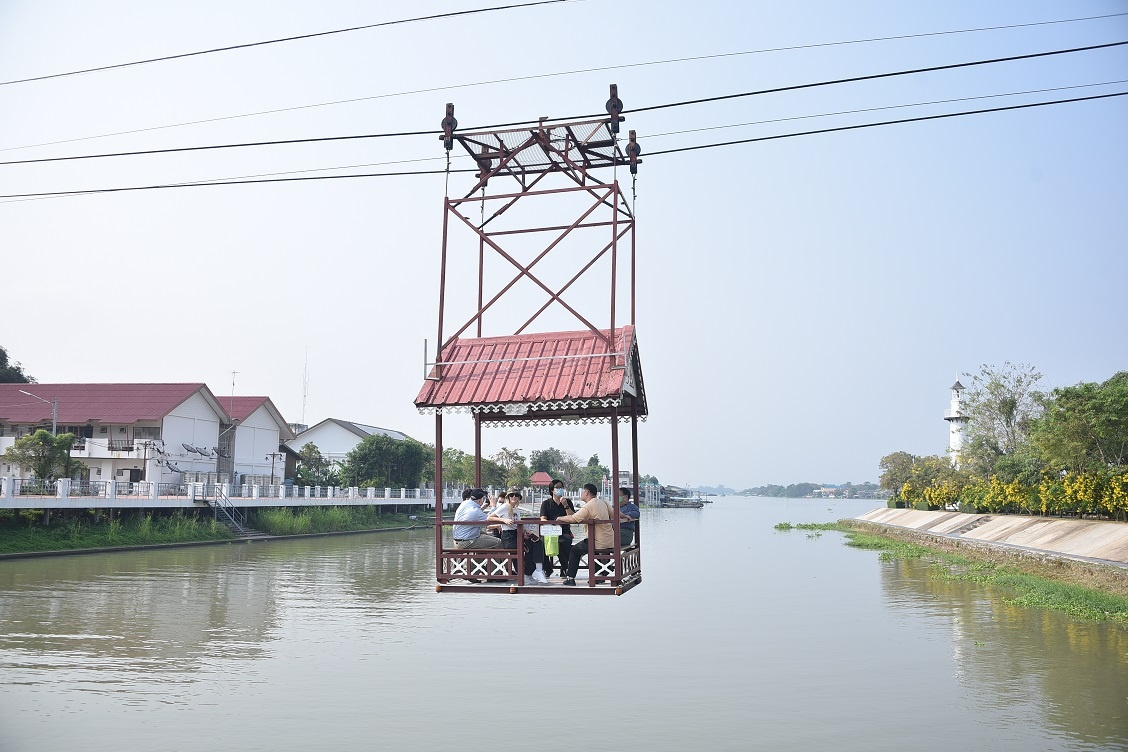
Wat Niwet Dhammaprawat is the only temple in Thailand with such distinctive characteristics. Although the ordination hall of Wat Rajabopidh in Bangkok also has a Gothic interior, the exterior is unmistakably Thai. Walking through the door evokes the feeling of entering a church, but the twist is, instead of seeing Jesus Christ and a large cross, you see Buddha images. The monastery is still used by monks to give sermons and the public can make merits or give alms. There is also a local myth about the temple that if an unmarried couple visits the temple together, they will soon break up. I’m not entirely sure whether this is true, but I discourage any couple from testing this myth.
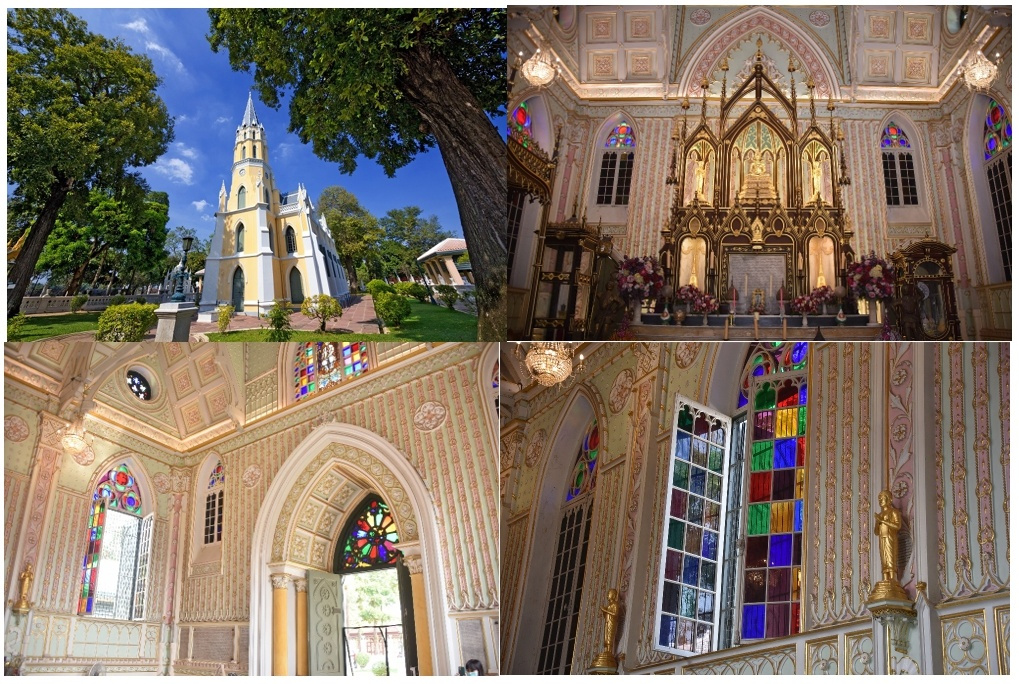
Centuries ago, (from 1350 to 1767) Ayudhya was a flourishing port city with traders from every continent arriving in high numbers to seek their fortunes. Some decided to settle down and set up communities. I only visited the Japanese Village that day and was informed that villages for the Dutch, Danish and Portuguese were also established back in the day. There are only small remnants of the Japanese Village left behind that don’t do justice in portraying the village’s former glory. Nevertheless, after watching a short documentary at the small museum within the village premises and a stroll around the area, I acquired a vague sense of the bustling liveliness of the village back then. I could imagine people walking by and conversing in different languages. I could see Thais and foreign nationals co-existing in an atmosphere of peace and content.

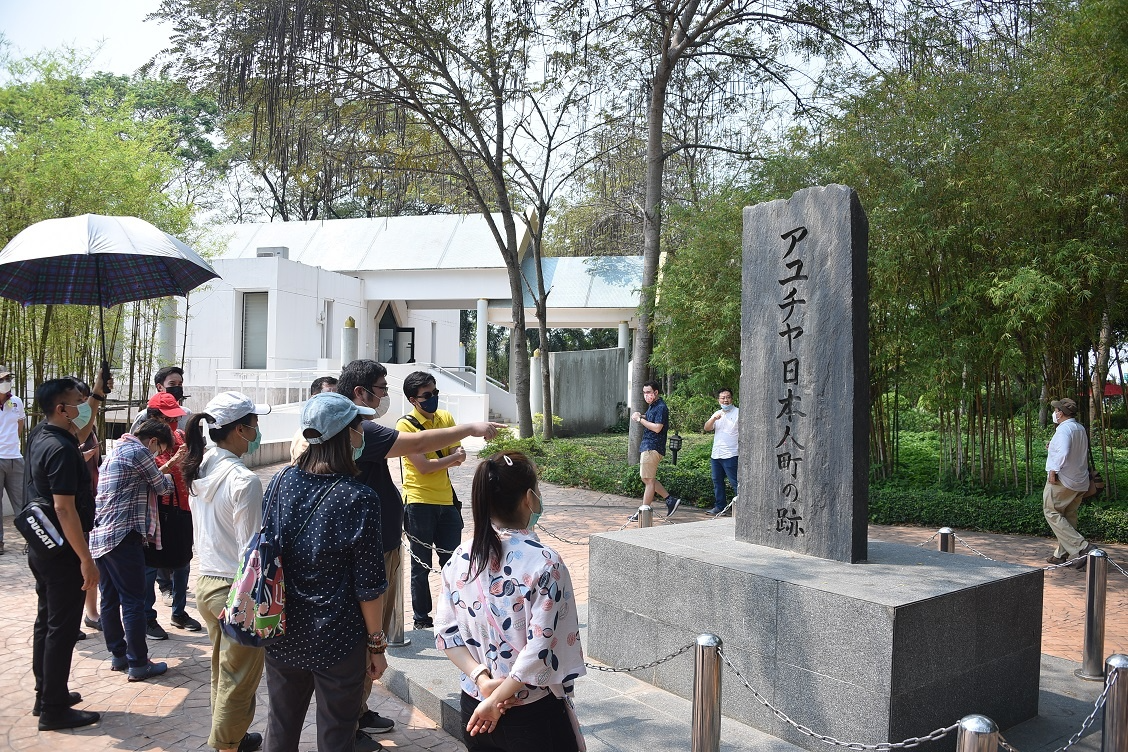
In my mind I could see cultures mingle and being exchanged, forging an ambiance of understanding and harmony. The short film also revealed that foreigners were appointed to important posts, suggesting that international visitors were truly immersed into Thai society both at the people level and in the royal court.
Foreign cultures and ways of life were embraced by locals. A prominent example was the creation of Thai desserts using egg yolks, a Portuguese recipe introduced by a Japanese-Portuguese-Bengali descent who was the head Western dessert chef in the palace, Maria Guyomar de Pinha or Thao Thong Kip Ma. Her sweets legacy is enjoyed in every corner of Thailand today, and known as “thong yip” (golden pinches) and “thong yod” (golden drops). There are so many foreign traits we have unconsciously adopted and claimed as “traditional Thai” but in fact, these were adaptations from our foreign friends many centuries ago. Most Thais still have no idea they were imported.
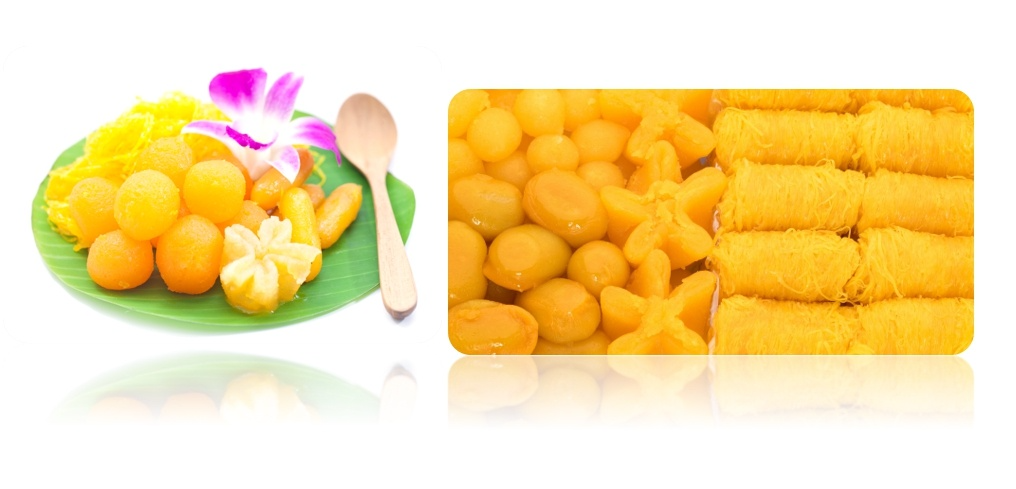
“Thong Yip” or Golden Pinches has a shape of a flower and “Thong Yod” or Golden Drops has a small round shape
The final stops during my day trip were no less exciting, especially Pom Pet or the Diamond Fortress, which we stopped by straight after lunch. Just by its name, one could already guess its function and why it was built. It is probably the only surviving Ayudhya fortress, constructed in a strategic location at the mouths of the Chao Phraya, Pa Sak and Lop Buri Rivers. From there, this hexagon fortress would be able to defend the inner city from an invasion via the river.
The fortress was designed by Danish and Portuguese architects and most of the structure still stands in one piece. One could still walk through some of the tunnels and catch a scenic view of the rivers. In its heyday, this area also served as a port, so merchants from the seven seas would congregate here to trade their wares. Different villages could be seen on the opposite river banks.
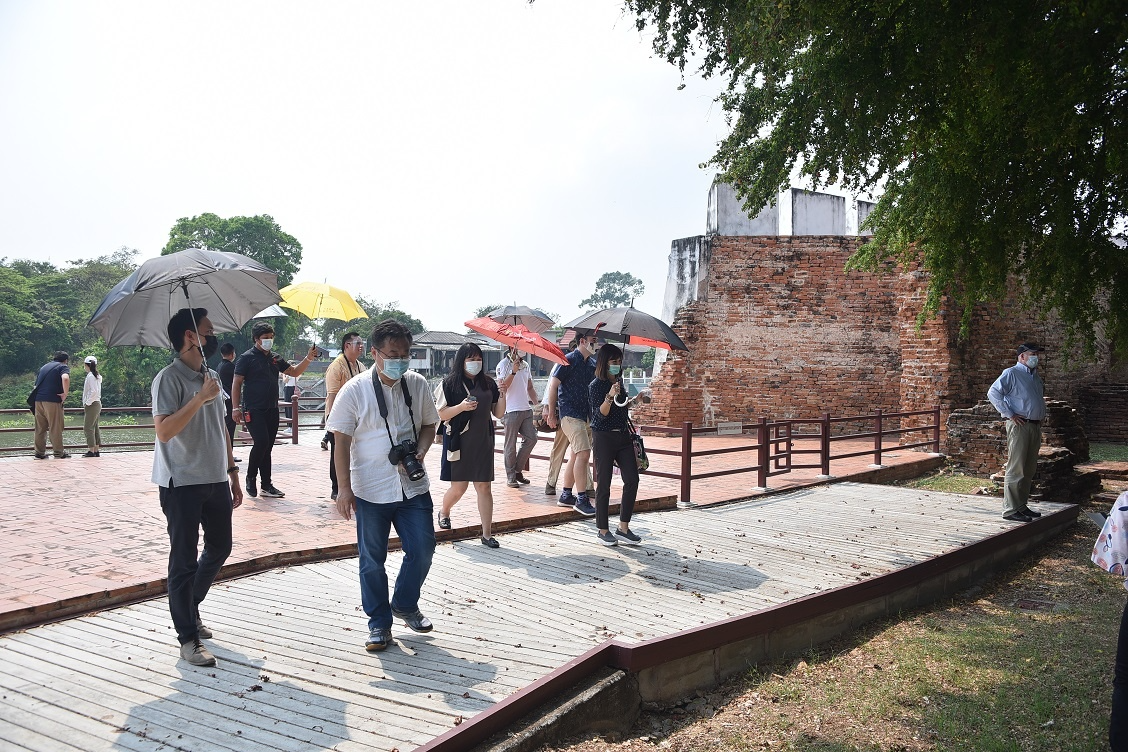
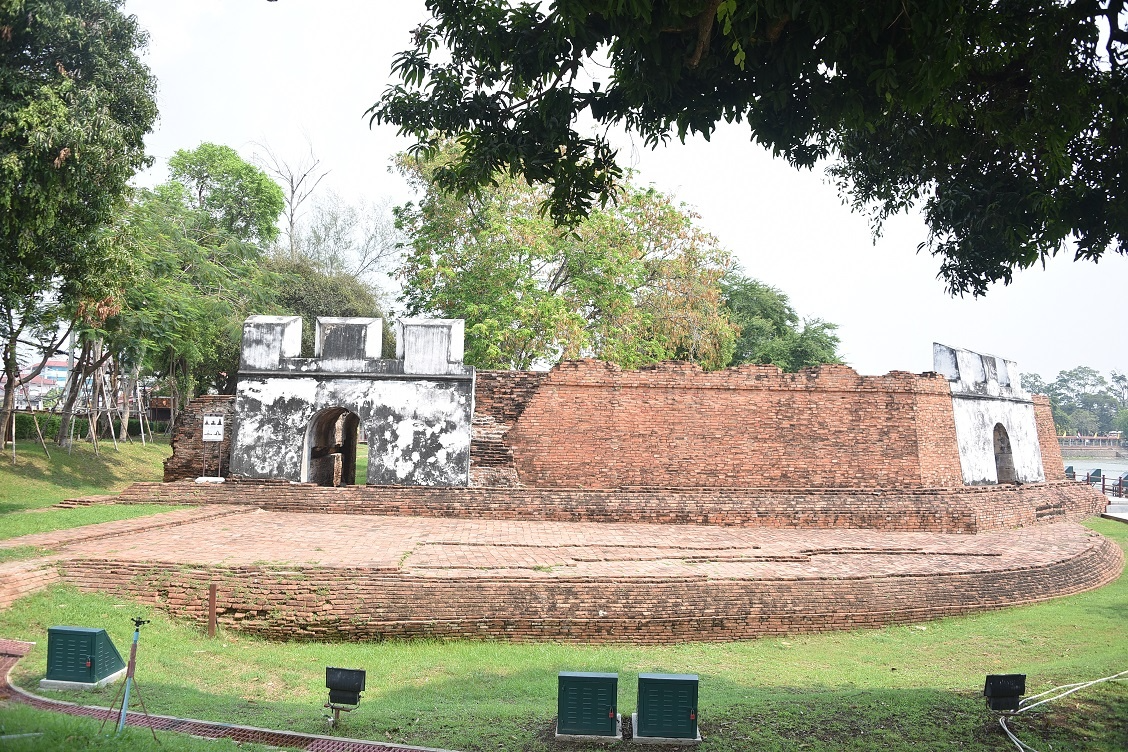
We then visited Wat Phra Mahathat, one of the oldest and most significant temples of the ancient kingdom. It housed the Buddha's holy relics and many royal ceremonies were held at this very location. When Ayudhya fell in 1767, the temple was severely damaged by fire and has since been abandoned. At present, the temple is in the Ayudhya Historical Park, famous for the sand-stone head of a Buddha statue engulfed in a Bodhi tree's root within the temple grounds. I know that in the Hollywood production “Lara Croft’s Tomb Raider,” the shots were taken at Angkor Wat in Cambodia, but you will find that akin settings can be found at this temple. Neighbouring cultures have influenced the architecture of many temples in Ayudhya.


Our last station before heading back was Wat Chaiwattanaram, commissioned by King Prasat Thong in 1630 in honour of his mother. The uniqueness of this temple includes the architectural style inspired by Angkor Wat. A large or central prang (Khmer-style pagoda) surrounded by smaller pagodas symbolises Mount Sumeru (for those who haven’t heard of it before, it’s the Hindu version of Mount Olympus). Although the site is under renovation, its beauty and mystique can still leave you breathless. The temple became even more popular when a Thai soap opera “Love Destiny” went on air and on Netflix.


The story depicts a modern day Thai lady who miraculously travelled back in time to ancient Ayudhya to meet the love of her life. The romantic-comedy became a national sensation, and scenes filmed at the temple were popularised even more. Thais from all walks of life came to visit this site, dressed in traditional costumes and snapping pictures as if they could go back in time too. If you have a chance to visit the place, wander around and let your imagination run free. I always enjoy ancient sites and museums as they arouse my imagination of the past still ‘intact’. And don’t forget to rent yourself a Thai traditional dress. You might be able to travel back through time and meet your love destiny too. Who knows? Anything could happen!


Everywhere I went, ‘multiculturalism’ shone through as a predominant feature. Thailand is a melting pot of cultures, as traces of foreign influence can be detected everywhere. Foreign footprints are evident in many aspects of Thai culture and traditions but have been embraced and blended with local traditions so well that they have become unnoticed. One thing that lingers in my mind after this visit is that the glory and prosperity of Ayudhya would not have reached its summit without the open nature of the people and the vision of the kings and the court in forging ties with foreign lands. Such factors have boosted Ayudhya’s status as an international port and enabled the kingdom to acquire new talents and technology of the era. This accentuated the mentality that Thailand welcomes all despite differences in race, gender, language and religion. Thailand has always been known as the Land of Smiles, but deep below in its heart, Thailand is also truly a land of openness, resilience, and diversity.
สถานเอกอัครราชทูต ณ กรุงเตหะราน
Office Hours: Sunday to Thursday, 08:30-12:00 and 13:00-16:30 (Except public holidays)